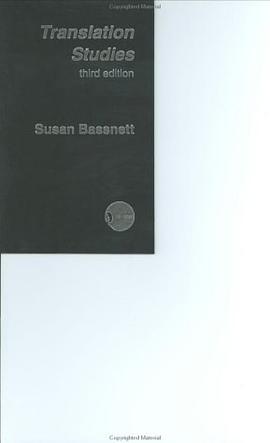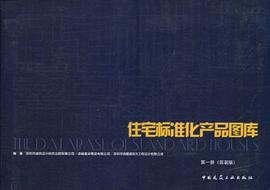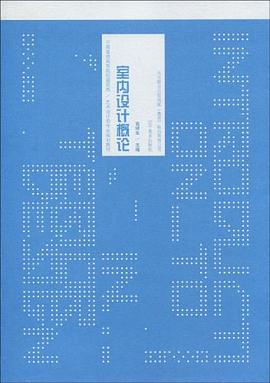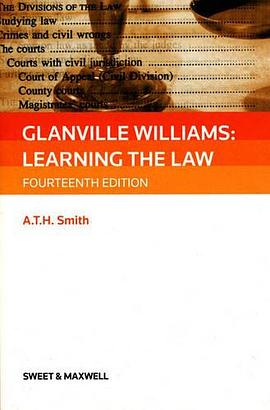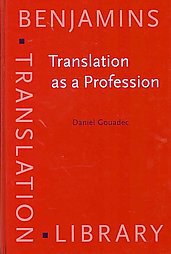
Translation as a Profession. pdf epub mobi txt 電子書 下載2025
- 翻譯
- 非文學
- 英語
- 英文
- 翻譯行業
- 翻譯職業
- 翻譯實踐
- 各文體翻譯
- 翻譯
- 翻譯理論
- 口譯
- 筆譯
- 翻譯職業
- 語言學
- 應用語言學
- 跨文化交流
- 翻譯行業
- 專業翻譯

具體描述
著者簡介
(法)達尼爾.葛岱剋
圖書目錄
Section I. Translation
chapter 1 An overview 3
1. Talking at cross purposes 3
2. The aims of translation 4
3. The nature of translation 5
4. The quality constraints 6
5. The stakes 8
6. The diversity of translations 11
7. An overview of the translator’s job 13
8. A breakdown of tasks 21
8.1 Pre-translation 21
8.2 Information retrieval and management 22
8.3 Terminography 23
8.4 Phraseography 23
8.5 Transfer (so-called ‘translation’) 24
8.6 Quality controls (part of quality assurance) 24
8.7 Post-translation 25
chapter 2 Categories of translation 27
1. General translation 27
2. Specialised translation 28
2.1 Translation of specialised material 28
2.2 Translation of specialised types of documents/materials 33
2.3 Special target/channel/purpose translations 33
2.4 Translation of material embedded in particular media 37
chapter 3 The translation process from A to Z 55
1. Finding the job of work 57
1.1 Before the translation service provision cycle gets underway 57
1.2 Once the translation ‘requirement’ has been identified 58
2. Getting the translation 59
2.1 Finding the operators 59
2.2 Once the operator or operators have been confirmed 62
3. Preparing, planning and organizing the job 63
3.1 Preparing the translation (localisation, subtitling, etc.) kit 63
3.2 Receiving and checking the translation/localisation/subtitling kit 65
3.3 Reaching final agreement 66
3.4 Setting up and testing the translation environment 67
3.5 Planning the translation 67
4. Preparing the translation 68
4.1 Making the source material available 68
4.2 Analysing the source material 68
4.3 Acquiring the knowledge and information required 70
4.4 Setting up the raw materials 71
4.5 Doing translation samples 72
4.6 Having the resources/raw materials and additional specifications approved
72
4.7 Advance (or forward) operations 72
5. Transferring/translating 73
6. Performing quality controls and upgrades 74
6.1 Quality controls by the translator 74
6.2 Quality controls by the reviser 76
6.3 Quality controls by the work provider 77
6.4 Corrections and adaptations by the translator and/or reviser 78
6.5 Final checks 79
7. Closing the job file 81
8. Creating the archive/updating the instruments 81
9. Follow-up 82
Section II. The translating profession
chapter 4 The translating profession 87
1. Translators 87
1.1 Translators are not interpreters 88
1.2 Translators are mostly women 88
1.3 Translators work in language pairs 89
1.4 Translators translate from B to A, with (increasing) exceptions 90
1.5 Translators specialise 91
1.6 Translators are masters of communications technologies 91
2. Translators’ statuses 92
2.1 Salaried translators 92
2.2 Freelance translators 99
2.3 Translators working for publishing companies 100
2.4 ‘Outlaws’ 100
2.5 ‘Invisible’ translators 101
2.6 Special cases 101
2.7 Distribution 102
3. Type of service and work organisation 104
3.1 ‘Pure’ translation vs. extended service 104
3.2 Single translator vs. multiple translators 104
3.3 Working alone vs. translating in a team 106
3.4 Being ‘autonomous’ vs. being ‘revised’ 108
3.5 PRAT vs. CAT 109
4. Partners 109
5. Job profiles 111
5.1 Translator 111
5.2 Specialist operators 111
5.3 Project manager 117
5.4 Technical writer 119
5.5 Multilingual, multimedia communication engineer 120
6. The organisation of supply 120
6.1 The freelancers’ offer 120
6.2 The translation companies’ offer 122
6.3 Brokerage companies and agencies 125
6.4 Miscellaneous offers 127
6.5 Blurred and changing contours 129
7. Markets and the organisation of demand 131
7.1 Language and directionality 134
7.2 Territory 134
7.3 Degree of specialization (general vs. specialised) 134
7.4 Category 136
7.5 Context 136
7.6 Scale 137
7.7 Accessibility (open vs. closed markets) 137
7.8 Volume (large vs. small markets) 139
7.9 Scope (pure translation vs. extended service) 141
7.10 Translator and translator strategy 142
Section III. Becoming a translator
chapter 5 Should I or shouldn’t I? Have I got what it takes to be a translator? 149
1. Prerequisites and conditions 150
2. Recruitment profiles 151
3. Recruitment levels 155
4. Have I got what it takes? 156
chapter 6 The die is cast! Alternatives and options 159
1. Choosing a particular domain (if relevant) 159
1.1 Literary translation 160
1.2 Translating for the publishing industry 161
1.3 Media translation 162
1.4 Specialised translation 162
2. Training to be a translator 163
2.1 Existing programmes and courses 163
2.2 Specific choices 167
3. Choosing a status 169
3.1 Going freelance or taking up salaried employment? 169
3.2 Working as an expat? 175
4. Starting out 176
4.1 ‘Setting up shop’ as a freelance translator 176
4.2 Finding employment as a salaried translator 180
4.3 Setting up one’s own business 182
chapter 7 Here we go! Finding (and holding on to) clients 187
1. Strategies 187
1.1 Set simple rules and never depart from them 190
1.2 Rely on word of mouth 191
1.3 Head for the right tier of the market 191
1.4 Beware of pipe dreams 192
1.5 Beware the kiss of death! 192
2. ‘Sell’ high quality translation 193
3. Learn how to talk about quality 194
4. Offer a wide range of products and prices 195
Section IV. Being a translator – Current (permanent) issues
chapter 8 Of time and money: Rates, productivity, quality and deadlines 199
1. Making a living out of translation 200
1.1 Salaried translators 200
1.2 Freelance translators 201
2. Managing wages and rates 201
2.1 Bases for calculation 202
2.2 Invoicing modes 203
2.3 Rates and remuneration 205
3. Earning more 208
3.1 Specialising or moving into a niche market 208
3.2 Increasing productivity 209
3.3 Selecting the ‘best’ clients and increasing their numbers 213
3.4 Updating tariffs regularly 213
4. Avoiding management errors 214
5. Optimizing time management 215
6. Managing the ‘in-between’ times 216
chapter 9 Living in a crowd: Interacting with no end of ‘partners’ 219
1. Translators and their work providers 219
1.1 Educating the work provider 220
2. Translators and prime contractors 222
3. Translators and project managers 223
4. Finance, accounting, purchasing 224
5. Translators and writers or designers 224
6. Translators and proof-readers 225
7. Translators and revisers 225
8. Translators and technical experts 227
9. Translators and information providers 228
10. Translators and other operators 229
11. Colleagues and fellow translators 230
12. Technical experts or linguists? 231
chapter 10 Professional ethics 235
1. Basic rules 235
2. Vis-à-vis the work provider 236
3. In the course of a translation job 237
4. With regard to payment 238
5. Vis-à-vis colleagues or fellow translators 238
6. Vis-à-vis partners 239
chapter 11 Certification: ISO, DIN, CENandmore 241
chapter 12 Recognition: Qualifications, titles, status and regulations 245
1. A professional status? 245
2. Professional titles 246
2.1 What title?What skills? 247
2.2 Delivering the title 248
2.3 Caution required 250
2.4 What if such a ‘title’ came into being? 252
3. Regulating access to the profession? 252
3.1 Against 253
3.2 For 254
3.3 So what is the answer? 255
4. The floodgates are opening 257
Section V. Evolutions and revolutions
chapter 13 From P & P toWS & ATT: From pen and paper to workstation
and assisted-translation tools 263
1. Basic hardware equipment 263
2. Basic functions 264
3. Text processing and desktop publishing 265
4. Web site editing/creation software 266
5. Translator tools/tools for translation 267
5.1 Dedicated resources or ‘passive aids’ to translation 267
5.2 Search engines, directories, blogs and portals 270
5.3 Terminology and phraseology management software 270
5.4 Translation memory management systems 271
5.5 Specialist software 275
5.6 Voice recognition software 276
5.7 Translation management software 279
5.8 Machine translation systems requiring human intervention 279
6. The Impact of information technology 280
chapter 14 From manual to automatic 281
1. The friendly revolution 281
2. The not so friendly revolution 286
3. The unfriendly revolution 289
3.1 Where dowe stand? 289
3.2 Should translators be afraid of machine translation? 292
3.3 Where will it all end? 294
chapter 15 From craft to industry 297
1. Markers of industrialisation 297
1.1 Massification 298
1.2 Processability of materials requiring translation 299
1.3 Standardisation of source material (and documentation) 299
1.4 Industrial methods, processes and work organisation 299
1.5 Process and product standardisation 300
1.6 Development and use of productivity-enhancing tools 300
1.7 Quality management 301
1.8 Internationalisation, globalisation, off-shoring, anglicisation 302
1.9 Outsourcing 304
1.10 The rise of translation companies and agencies 304
1.11 Business concentration, mergers and capitalisation 305
1.12 The rise (and fall?) of the salaried translator 306
1.13 A never ending quest for productivity gains 308
1.14 Division of labour and operator specialisation 308
1.15 The rise of the supervisor (projectmanager) 309
1.16 Distance working 309
1.17 Fierce competition 310
1.18 Niche markets 310
2. The impact of industrialisation 311
3. Industrialisation as a policy objective 315
chapter 16 From the village to the globe: Dotcom, dotbiz, and dotnet are homeless, ruthless, and heartless: they just do business... 317
Section VI. Training translators
chapter 17 Training translators 327
1. Course objectives and profiles 327
2. Course components 334
3. The training process 337
4. Specialisation 337
5. Assessing learning outcomes 340
6. Which students? 341
7. Where and how? 343
8. Course validation 347
9. Translator trainers 350
9.1 Tasks and responsibilities 350
9.2 Trainer profiles 354
9.3 Emerging economies: A special case 356
10. Too far down the vocational road? 357
11. In-house training only? 358
12. Heaven help us! 359
What the (near) future (most probably) holds. . . 361
Postface 369
Glossary 373
Further reading (and browsing) 387
Index 389
· · · · · · (收起)
讀後感
一个标准译者一个月时间内可能会翻译一份报价单,两份出生证明,一份非常糟糕的铺设橡木地板机的使用说明书,一份重新修订的汽车销售合同,一份粪叉配件目录,一本饭店指南,三份传真,一份200吨苹果的订单,两份索赔信件,一本报刊等等。 …god i love this !!!!!!!!
評分一个标准译者一个月时间内可能会翻译一份报价单,两份出生证明,一份非常糟糕的铺设橡木地板机的使用说明书,一份重新修订的汽车销售合同,一份粪叉配件目录,一本饭店指南,三份传真,一份200吨苹果的订单,两份索赔信件,一本报刊等等。 …god i love this !!!!!!!!
評分一个标准译者一个月时间内可能会翻译一份报价单,两份出生证明,一份非常糟糕的铺设橡木地板机的使用说明书,一份重新修订的汽车销售合同,一份粪叉配件目录,一本饭店指南,三份传真,一份200吨苹果的订单,两份索赔信件,一本报刊等等。 …god i love this !!!!!!!!
評分一个标准译者一个月时间内可能会翻译一份报价单,两份出生证明,一份非常糟糕的铺设橡木地板机的使用说明书,一份重新修订的汽车销售合同,一份粪叉配件目录,一本饭店指南,三份传真,一份200吨苹果的订单,两份索赔信件,一本报刊等等。 …god i love this !!!!!!!!
評分一个标准译者一个月时间内可能会翻译一份报价单,两份出生证明,一份非常糟糕的铺设橡木地板机的使用说明书,一份重新修订的汽车销售合同,一份粪叉配件目录,一本饭店指南,三份传真,一份200吨苹果的订单,两份索赔信件,一本报刊等等。 …god i love this !!!!!!!!
用戶評價
Languages are essential, but insufficient. A very informative book covers almost everything to be a translator.
评分Languages are essential, but insufficient. A very informative book covers almost everything to be a translator.
评分Languages are essential, but insufficient. A very informative book covers almost everything to be a translator.
评分Languages are essential, but insufficient. A very informative book covers almost everything to be a translator.
评分Languages are essential, but insufficient. A very informative book covers almost everything to be a translator.
相關圖書
本站所有內容均為互聯網搜索引擎提供的公開搜索信息,本站不存儲任何數據與內容,任何內容與數據均與本站無關,如有需要請聯繫相關搜索引擎包括但不限於百度,google,bing,sogou 等
© 2025 book.quotespace.org All Rights Reserved. 小美書屋 版权所有



